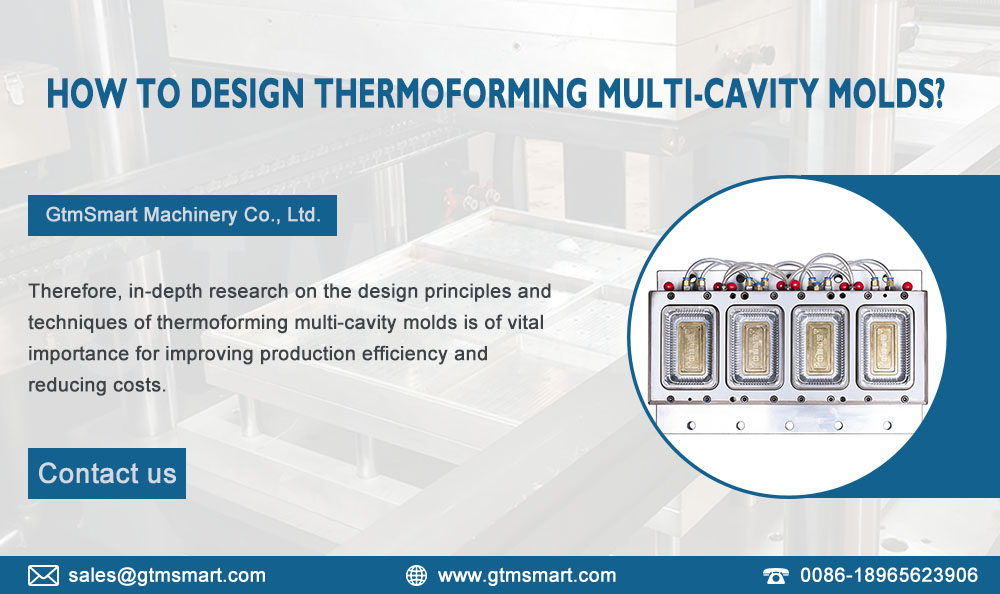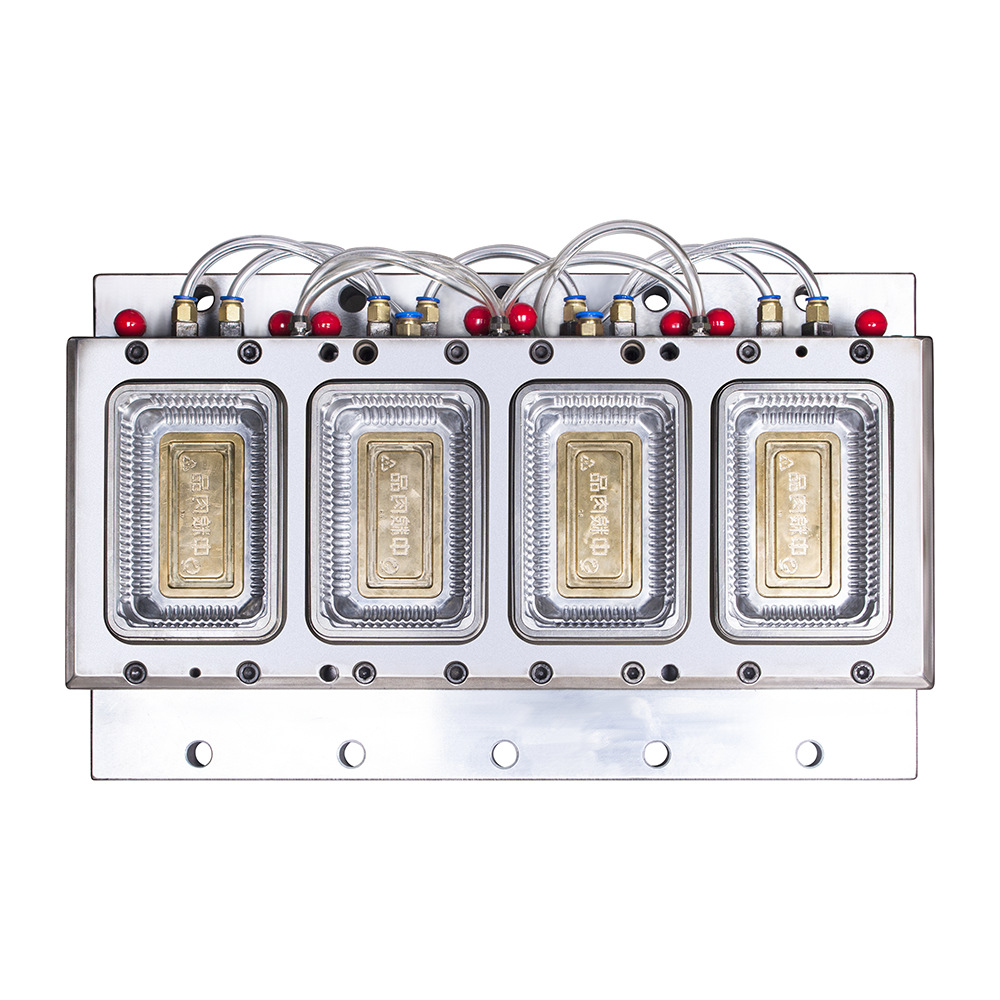
How to Design Thermoforming Multi-Cavity Molds?
With the continuous expansion of the global plastic products market and the constant innovation of technology, the design of thermoforming machine multi-cavity molds has become a topic of great concern in the plastic products industry. In plastic molding processes, the design of molds directly affects production efficiency, product quality, and cost control. Therefore, in-depth research on the design principles and techniques of thermoforming multi-cavity molds is of vital importance for improving production efficiency and reducing costs.
1. Basic Principles of Thermoforming Multi-Cavity Molds
Thermoforming multi-cavity molds are molds that utilize a heating system to heat plastic raw materials to a molten state, and then inject the molten plastic into mold cavities for molding through a runner system. Compared to traditional single-cavity molds, multi-cavity molds can mold multiple products simultaneously, with higher production efficiency and lower costs.
2. Design Essentials and Technical Considerations
Material Selection and Heat Resistance: The selection of mold materials is one of the important factors affecting mold performance. Commonly used mold materials include tool steel, stainless steel, etc., and it is necessary to reasonably select materials based on specific molding temperatures and plastic material characteristics to ensure that the mold has good heat resistance and mechanical properties.
2.1 Runner Design: The design of the runner directly affects the flow of plastic in the mold, affecting the quality of product molding and production efficiency. Proper design of the runner structure ensures uniform flow of plastic, avoiding defects such as air bubbles and melt lines.
2.2 Cooling System: The design of the cooling system affects the cooling speed and uniformity of the mold, directly impacting production cycle and product quality. Through reasonable design of the cooling system, mold cooling efficiency can be improved, molding cycles shortened, and production costs reduced.
2.3 Cavity Design: Cavity design needs to be reasonably designed according to the structural characteristics of the product and molding process requirements to ensure that the mold can accurately replicate the shape and size of the product while minimizing stress and deformation during product molding.
2.4 Temperature Control System: The stability of the temperature control system is crucial for plastic thermoforming machine processes. Through precise temperature control systems, mold temperature stability can be ensured, avoiding quality issues caused by temperature fluctuations.
2.5 Molding Mechanism: The design of the molding mechanism needs to consider the structural characteristics of the mold and molding process requirements to ensure that the mold can open and close accurately and stably, avoiding product defects caused by poor mold opening and closing.

3. Advantages and Challenges of Thermoforming Multi-Cavity Molds
Thermoforming multi-cavity molds have many advantages over traditional single-cavity molds, such as high production efficiency, low cost, and stable product quality. However, their design and manufacturing processes also face challenges, such as complex runner design and difficulty in controlling the cooling system. Therefore, design personnel need to have high professional standards and rich experience to design high-quality and efficient thermoforming multi-cavity molds.
4. Application of Thermoforming Technology in Mold Design
In the design of thermoforming multi-cavity molds, automatic thermoforming technology plays an important role. By controlling the mold temperature, shrinkage and deformation problems of plastic during molding can be effectively solved, improving product accuracy and surface quality. In addition, rational hot runner design can achieve uniform filling of plastic materials, reducing defects such as air bubbles and short shots, and improving product appearance and performance.
5. Layout and Optimization of Multi-Cavities
The layout and optimization of multi-cavities are key aspects in the design of thermoforming multi-cavity molds. In layout design, factors such as product structure, size, and molding process need to be considered to determine the number and position of cavities to achieve the best molding results. In optimization design, mold performance and stability can be further improved by optimizing runner structure, increasing cooling systems, and improving venting systems.
6. Material Selection and Processing Technology
In the design of thermoforming multi-cavity molds, material selection and processing technology are equally important. Mold materials need to have good heat resistance, hardness, and wear resistance to ensure long-term stable operation. At the same time, appropriate processing technologies such as CNC machining, EDM, etc., need to be selected according to product requirements and production scale to ensure mold accuracy and reliability.
7. Mold Maintenance and Management
Finally, maintenance and management of pressure forming machine multi-cavity molds are key to ensuring their long-term stable operation. Regular inspection of mold wear and damage, timely repairs and replacements, are necessary to ensure the integrity and stable performance of the mold. Meanwhile, establishing a scientific mold management system, strengthening training on mold use and maintenance, can improve mold utilization and service life.
In conclusion, the design of thermoforming multi-cavity molds involves multiple aspects, requiring comprehensive consideration of materials, processes, layout, etc., to achieve the best molding results and economic benefits. Only through continuous exploration and innovation, continuous improvement of design and technical levels, can one stand undefeated in the fierce market competition.
Media Contact
Company Name: GTMSMART Machinery Co., Ltd.
Email: Send Email
Country: China
Website: https://www.gtmsmart.com/
